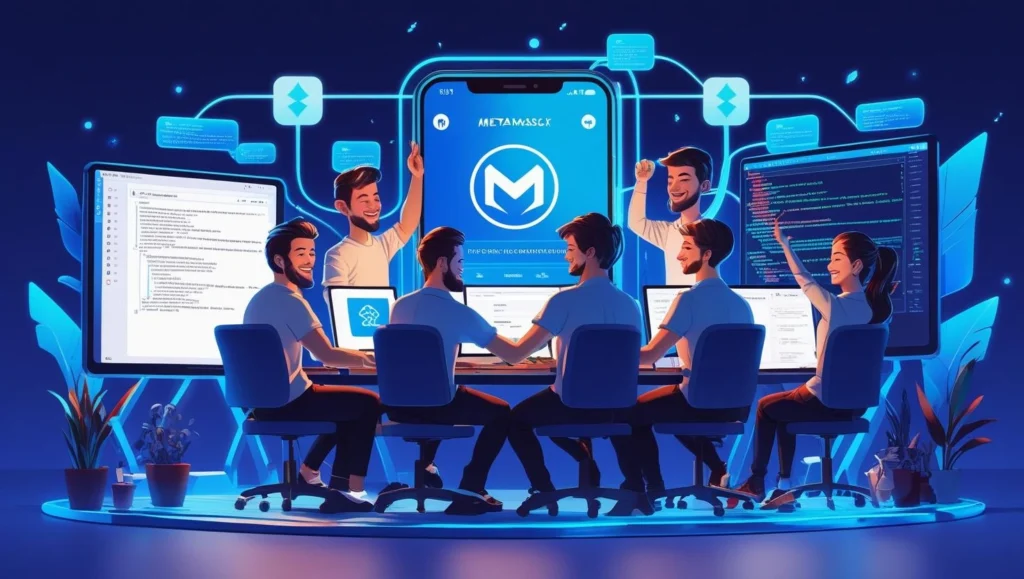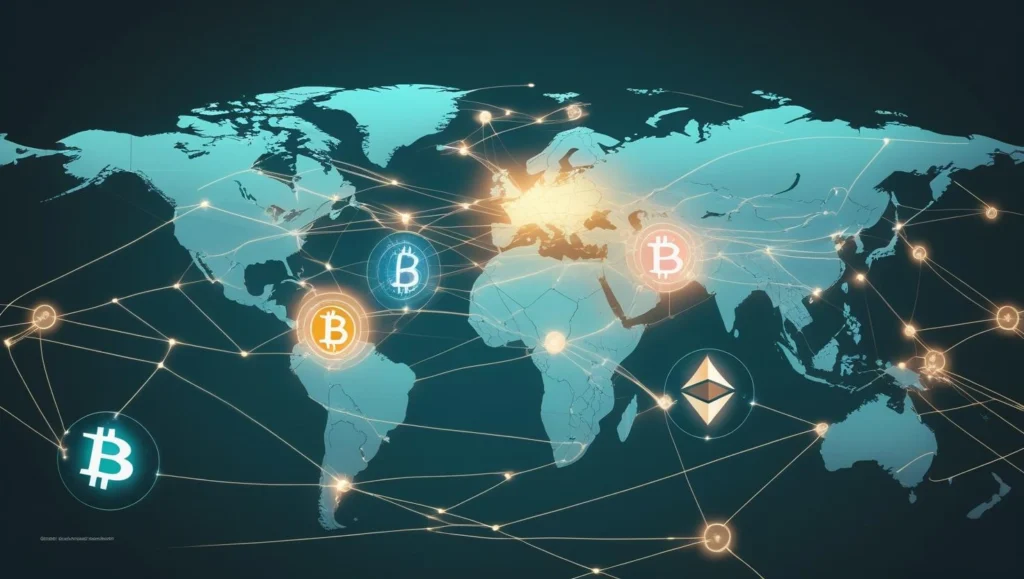Introduction
Blockchain continues transforming digital infrastructure globally, powering new forms of finance, ownership, and decentralized systems. In 2025, this innovation matures—focusing on scalability, user trust, and cross-chain functionality. For developers, investors, and startups, staying ahead depends on a guided roadmap that details where the industry is headed this year.
This 2025 blockchain roadmap will explore cutting-edge priorities: smart contracts, NFTs, major ecosystems like Ethereum and Solana, and tools for building scalable crypto apps. You’ll also discover how to launch a crypto app, leverage developer portals like the Ethereum blog, and navigate evolving challenges—security, regulations, and global adoption. The roadmap empowers builders to make informed decisions, stay on the cutting edge, and align product planning with the future of decentralized tech.
What’s the Blockchain Roadmap?
What’s the blockchain roadmap? In 2025, it’s more than hype—it’s a strategic development plan aligned to key goals:
- Cross‑chain interoperability enabling assets and data flow across multiple blockchains.
- Decentralization at scale, using Layer 2 networks, sharding, and rollups.
- Enhanced user trust, with transparent UX and regulated finance standards.
A modern smart contract & crypto tech roadmap starts with defining product goals—DeFi, NFT platforms, or identity systems—then layers in architecture, tooling, and regulatory awareness. It supports agile iteration with modular components: the smart contract backend, wallet integration, front-end UX, and stakeholder governance structures.
Today's builders must combine decentralized logic with user-centered design: gas-efficient, secure, and fast. The 2025 roadmap also recognizes the increased importance of regulation, interoperability with centralized systems (like CBDC pilots), and integrating AI and IoT into blockchain use cases. Ultimately, the result is a blueprint that guides your project from proof-of-concept to global launch.
Core Technologies and Platforms
a. Smart Contracts & Solidity
Solidity remains the top language for writing smart contracts—self‑executing code that runs on decentralization. Key 2025 improvements include:
- Layer 2 compatibility (rollups, zk-rollups).
- Frameworks: Remix (quick prototyping), Truffle (full suite), Hardhat (debugging and testing).
- Gas optimization: using latest EVM opcodes and audit learnings to reduce costs.
- Security tooling: integration of linters and static analyzers like MythX, Slither, etc.
Smart contract developers should follow best practices: detailed testing, formal verification, and regular auditing to prevent exploits and ensure resilience.
b. NFTs and Token Standards
NFT innovation continues to redefine ownership, digital identity, and revenue models in 2025:
- ERC‑721: Unique, one-of-a-kind token standard
- ERC‑1155: Hybrid standard supporting multiple token types
Use cases now extend to:
- Gaming: asset ownership and in-game markets
- Digital art with dynamic metadata and royalties
- Identity systems like Soulbound Tokens
Tools such as OpenZeppelin contracts, Mintable, and decentralized markets like OpenSea streamline NFT launch workflows.
c. Blockchain Ecosystems
Ethereum
Ethereum remains foundational, continuing upgrades like:
- Layer 2 rollups (Arbitrum, Optimism) for scalability
- Sharding and EIP‑4844 (proto-danksharding) reducing gas costs
- Strong dev community centered around the Ethereum blog and Ethereum Foundation updates
Solana
Solana focuses on ultra‑low latency and microtransaction capability:
- Fast validation times (<400 ms blocks)
- Rust-based smart contracts (via Anchor)
- Ecosystem support that includes Serum, Phantom wallet, and Solana's dev docs
Other Chains
Include modular projects like Polkadot (Cross‑chain bridges), Avalanche, and Cosmos, but Ethereum & Solana remain central in 2025.
Launching a Crypto App

1. Prototype & Test
Build an MVP using smart contracts and test on Ethereum testnets (Goerli, Sepolia) or Solana’s devnet.
2. Front‑End Integration
Use web3.js or ethers.js for blockchain connectivity. Embed wallet support—e.g., MetaMask, Phantom. Use UI frameworks like React or Svelte.
3. APIs & Infrastructure
Use platforms like Alchemy, Moralis, or Infura for robust backend support, real-time event subscriptions, and indexed queries.
4. Deployment
Audit smart contracts before deploying. Use CI pipelines (GitHub Actions) and deploy to mainnets when mature.
5. User Interface
Design UX flows for wallet onboarding, token swaps, and notifications. Insert gas estimation tools to simplify user experience.
Finally, engage with community through incentives, transparent token models, and documentation.
Developer Resources: Ethereum Blog and More
Staying updated is vital—subscribe to the Ethereum blog for protocol updates, EIP discussions, and ecosystem partnerships. Developers also rely on:
- Solana Dev Portal: includes documentation, tutorials, and code templates.
- Open-source GitHub repos for layer 2 and cross-chain bridge projects.
- Tech newsletters like Week in Ethereum, Solana Updates, and CryptoBriefing.
Significantly, communities such as Discord servers and hackathons host real-time knowledge sharing and network growth.
Developers should stay updated by following resources like the Ethereum Blog, which regularly publishes insights on upcoming EIPs, Layer 2 improvements, and best practices for building secure dApps.
Monetization & Business Models
Innovative business models are powering crypto apps in 2025:
- Tokenomics Design: deflationary models, staking, yield farming
- DAOs: decentralized governance of apps—token-based voting
- NFT Royalties: automated revenue for creators on secondary sales
- API & service fees: subscription models for developer tools
- Play‑to‑earn (P2E) gaming with token incentives
Efficiency in token design and regulatory compliance (e.g., SEC, EU MiCA) enables broader adoption and monetization.
Security, Regulation & Risks
Security remains a top priority—smart contracts must undergo:
- Third-party audits (CertiK, OpenZeppelin)
- Formal verifications
- Bug bounty programs (via Immunefi)
Risks include rug pulls, Oracle manipulation, and consensus failures. Use multisig wallets and timelocks to enhance integrity.
Regulation is evolving:
- In the USA, SEC scrutiny influences token classification
- EU’s MiCA regulates stablecoins and governance tokens
- Asia’s varied stance, with trailblazers like Singapore and India
Working with certified blockchain security experts and legal advisors is essential.
Global Adoption & 2025 Trends

In 2025, global blockchain adoption is driven by:
- CBDC pilots in Asia, Africa, and Europe—central banks embracing token tech
- Decentralized identity (DIDs) and SSI protocols for digital rights
- Supply chain transparency—IBM, Walmart, and Maersk pilots
- Cross-border payments enhanced by faster settlement and lower fees
- Integration with AI/digital twins—Oracle AI enabling predictive smart contracts
These trends signal blockchain going mainstream—beyond speculation.
Conclusion
The Blockchain Development Roadmap 2025 offers a precise framework for building scalable, secure, and future-ready crypto apps. By mastering smart contracts with Solidity, launching NFTs, harnessing ecosystems like Ethereum and Solana, and leveraging strong dev resources, you’ll be equipped to launch a crypto app that thrives globally.
Ensure your project is secure, audited, and compliant. Stay connected to innovations via the Ethereum blog and explore emerging geographies and finance trends. With cross-chain standards and decentralized governance on the rise, 2025 is your moment to contribute to blockchain's transformation.
Explore our companion resource on open-source adoption for startups, detailing tool selection and community integration: Open-Source Tech Roadmap for Startups.








